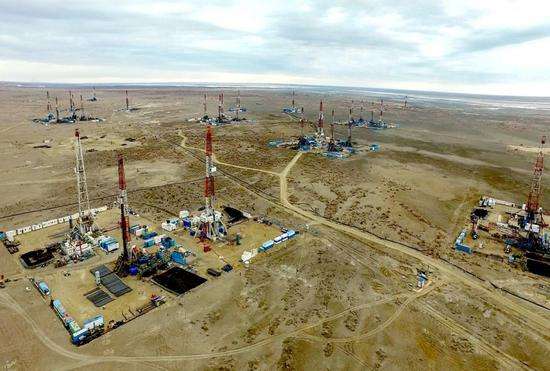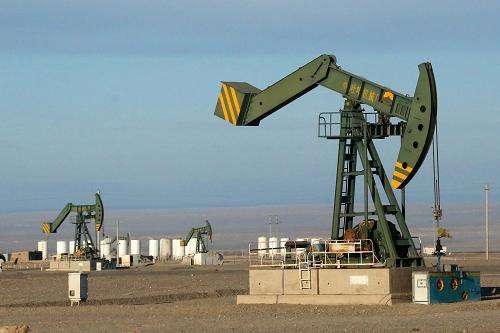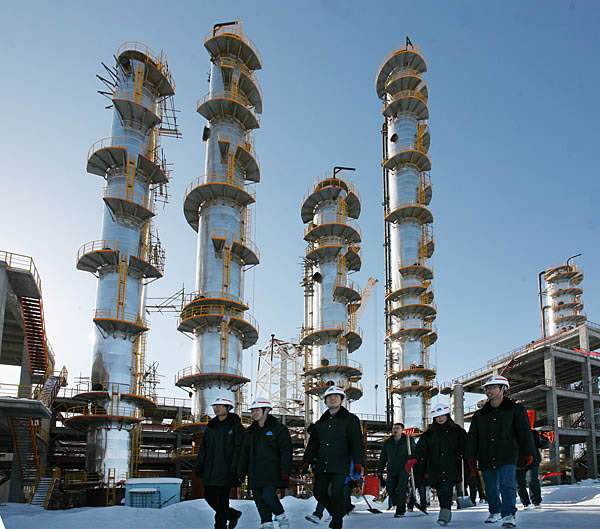Xinjiang industry has stepped into the accelerating stage
3 min readThe period from 1953 to 1965 is the early stage of industry development in Xinjiang.
From 1953 to 1957, the Xinjiang cement plant, Hetian filature, Xinjiang acid plant and other large and medium-sized industrial enterprises were built in Xinjiang. In 1957, Xinjiang reached the industrial output value of 500 million Yuan. From 1958 to 1965, a large number of medium and large heavy chemical enterprises such as Hami Sandaoling opencast coal mine, Dushanzi oil refinery, Hongshanzui power station, Xinjiang lithium salt factory Urumqi second steel plant, and Xinjiang caustic soda factory, and a number of medium and large light industry enterprises such as Bayi cotton mill, Kashgar cotton mill, Kuitun cigarette factory, Xinjiang hardware factory were built in Xinjiang. In 1965, Xinjiang reached the total industrial output value of 1.377 billion Yuan, which was 15.2 times of that of 1949.

From 1966 to 1978, Xinjiang industry developed in twists and turns. In this period,construction of heavy industry had made a great progress, electronics and fertilizer industry started to develop, and a batch of electric power, coal, steel, and chemical fertilizer enterprises were built such as Xinjiang Hongqi Machine Factory, Xinjiang Wireless Factory,
Xinjiang Gear Factory, Xinjiang Fertilizer Factory, First Auto Parts Factory Red Star Device Factory, Lime kiln hydropower station Dongshan Jiangou Coal Mine, and Yamansu Iron Ore,as well as the light industry enterprises of Fangcao Lake Cotton Mill, Huocheng Sugar Refinery. By 1978, the industrial output value had reached 3.39 billion Yuan in Xinjiang.

From 1979 to 1995, the industry in Xinjiang had a comprehensive and rapid development. A number of large and mediumsized projects were constructed, such as Urumqi petrochemical general factory, Urumqi tire factory, Manas power plant, Hejing Dashankou hydroelectric station, as well as the light industry enterprises of Xinjiang woolen mill, Korla cotton textile factory, Hetian cotton textile factory, Yining flax spinning mill, Aksu sugar refinery, Xinjiang brewery, and Bohu paper mill In the early 1990s, Xinjiang began to implement the superiority resources transformation strategy and new science and technology strategy, and further clarified the direction of industrial development, the resources industries developed rapidly represented by the oil industry. In 1995, the industrial added value reached 21.9 billion Yuan, with an increase of 4.2 times of that in 1978. During this period, the industrial system in Xinjiang was becoming more and more perfect, and the industrial capacity was greatly improved.
From 1996 to 2002, the industry in Xinjiang entered the stage of consolidation and adjustment. The implementation of “black and white”strategy accelerated the superiority resources transformation of coal resource and cotton resource. After the fierce market competition, Tarim Oilfield Company, Tuha Oilfield Company, Tianshan Textile Company, Zhonghe Share, TBEA, Tunhe Group Zhongtai chemical and other companies continued to grow. These large enterprises and groups drove the industrial economic development of Xinjiang to new step.

In 1997, the industrial added value in Xinjiang exceeded that of the primary industry, marking the establishment of industry’s leading role. Oil, coal, steel, textile, agriculture products processing, etc. have become the major growth points of the industrial economy.
During this period, a number of major project were built, such as Tianshan paper mill,
Western sugar refinery, Axi gold mine, Tunhe cement plant, and Kashgar thermal power plant.
Since 2003, Xinjiang industry has stepped into the accelerating stage.
In 2005, Xinjiang new industrialization meeting made the strategic decision of introducing large enterprises and groups, complying with the requirement of scientific development to let the outside large enterprises and groups restrict the state-owned enterprises in Xinjiang, and promote the industrial upgrading and optimization with human resources, capital, technology, management and marketing, and other advantages to expand the strength of the state economy.








